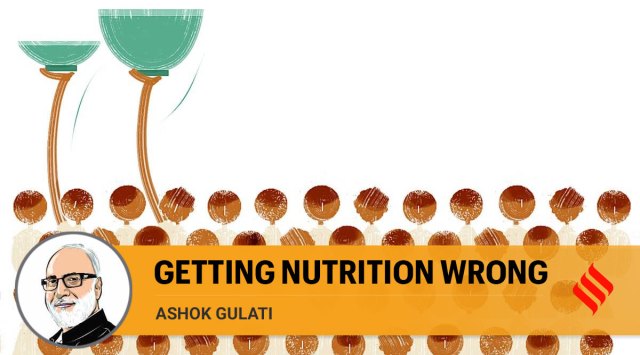
India’s rank of 107 among 121 countries in the Global Hunger Index (GHI, 2022), released earlier this month by the aid agencies Concern Worldwide and Welthungerhilfe (CWW), has caused some anguish within the Government of India. The Opposition parties have cited India’s poor score as “evidence” of the poor policies and performance of the government, which hit back by rejecting the GHI and alleging that the index is a deliberate attempt to taint India’s image. Let me try to dig a little deeper to locate the problem with the GHI and suggest ways to improve it.
Many readers may not know that the GHI had its genesis at the IFPRI (International Food Policy Research Institute), where I had the privilege to serve for more than a decade. Let me say at the very outset, the IFPRI is a very responsible and credible organisation, and would never ever venture into maligning any country’s image. Having said that, let me also add that any index of such nature can have conceptual and empirical problems, and there is always scope to improve. I recall when the GHI was envisioned, we at the IFPRI had discussed and debated many things from its nomenclature to weights of the different components that comprise the index. I, for one, had my reservations at that time and have so even now. So, I sympathise with the government’s contention, “Three of the four indicators used for calculation of the index are related to the health of children and cannot be representative of the entire population. The fourth and most important indicator estimate of the proportion of undernourished population is based on an opinion poll conducted on a very small sample size of 3,000.” I agree with this statement and even go further in saying that the weightage diagram in this GHI needs a revisit if it has to represent the entire population.
My humble suggestion to the authors of the index is to use the calorie intake based on FAO’s food balance sheets. I say so because even the NSSO data on consumption has serious problems of underestimation. Statistical experts caution using NSSO consumption data for total consumption. Our own research at ICRIER shows that the gap in calories consumption as estimated from NSSO consumption surveys and those from production statistics of food has been growing over years. The food balance sheet approach gives 15 to 20 per cent higher calorie consumption than the NSSO. For 2019 we estimated 2,581 calories while the NSSO consumption survey of 2011 is stuck at 2088 calories. More research is needed by the agencies that produce the GHI to refine the numbers. I am sure with this improvement, India’s ranking will also improve. And since India is such a large country, even global numbers on hunger will undergo significant changes.
But let me turn to other variables that go into the GHI and their weightage. Besides the malnourished population, which has a weightage of 0.33, the other variables are stunting (low height for age) and wasting (low weight for height) of children below the age of 5, which together have a weight of 0.33. The fourth variable is that of mortality rate of children under 5 years, which also has a weight of 0.33. So, in the overall GHI, two-thirds of the weightage are of children under 5 years. No wonder the government has been saying that the GHI is more reflective of children’s health status than that of the entire population. In children’s health status much of the data used in GHI is from National Family Health Surveys.
What we need to note however is the following: In the case of mortality rates, no matter how you measure, there is a significant drop over time. The mortality rate for under 5 years age group (U5MR) has fallen from 88.1 in 2001 to 32.6 in 2020, per 1000 live births (see infographics).
The progress in stunting and wasting is much slower as measured by NFHS because when children are saved from dying, they often increase the inflow of malnourished children. The outflow from this reservoir of stunted and wasted children is still not large enough to show as dramatic a decline as mortality rates have shown. But once mortality rates stabilise at low levels, I am sure the fall in stunting and wasting will be much faster.
However, it must be noted that stunting and wasting is not just because of lack of food (hunger). It is a multi-dimensional problem that requires focus on female education, access to immunisation, and better sanitation facilities. The upshot of all this is that we need a much more comprehensive index, like the Multi-dimensional Poverty (MPI) index of the UNDP, than the GHI to capture the status of the entire population.
Gulati is Distinguished Professor at ICRIER. Views are personal